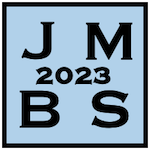Modelling structured populations with changing number of demes in the structured coalescent framework
1 : Institut de Mathématiques de Toulouse
UMR5219 UPS, Institut de Mathématiques de Toulouse
2 : Institut National des Sciences Appliquées Toulouse
Institut National des Sciences Appliquées (INSA) - Toulouse
3 : Evolution et Diversité Biologique
Institut de Recherche pour le Développement, Université Toulouse III - Paul Sabatier, Centre National de la Recherche Scientifique, Centre National de la Recherche Scientifique : UMR5174
The reconstruction of the past demographic history of a population remains particularly challenging while being of a great importance. Many methods of inference of this demographic history have been developed but we are focusing on the ones that are based around population structure, and more specifically on the ones using the structured coalescent. We place ourselves in the IICR (Inverse Instantaneous Coalescence Rate) framework. Rodriguez et al. (2018) (1) showed that we can use theory of Markov chains to obtain the IICR of stationary models of population structure. For each stationary model, we can construct a Q-matrix of the corresponding coalescent process that will allow us to compute its IICR. The size of this matrix depends on the number of states of the structured model, which is the number of configurations of the individuals in our sample. It is influenced by the number of demes and the symmetry of the structure. This framework has been extended to non-stationary model in which migration flows between subpopulations can change by simply multiplying these Q-matrices. However, it was not possible to treat models with a changing number of states such as the one implying a change in the number of demes.
In the present work, we propose an extension of the non-stationary structured coalescent in which the number of states will be allowed to change and show how this affect their IICR in particular in scenarios of habitat fragmentation or expansion. This will provide the foundations of future demographic history inference methods.
(1) Rodríguez, W., Mazet, O., Grusea, S. et al. The IICR and the non-stationary structured coalescent : towards demographic inference with arbitrary changes in population structure. Heredity 121, 663–678 (2018).

 PDF version
PDF version
